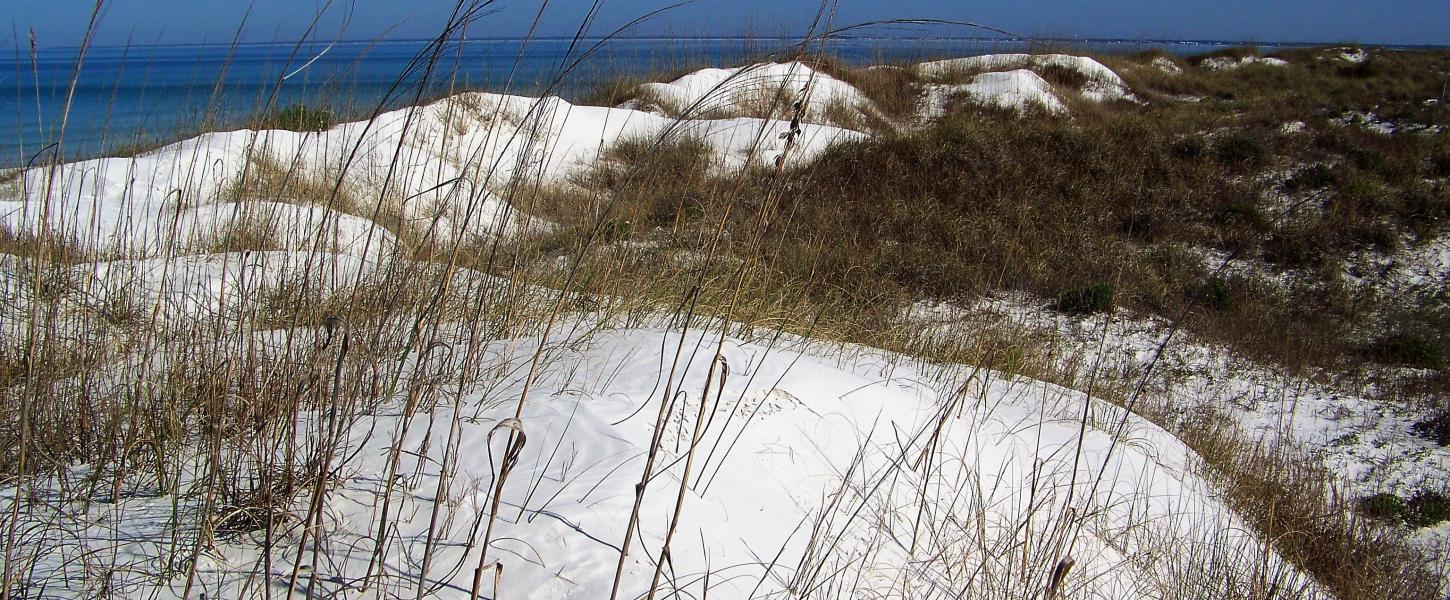Sand Dunes play an important role

When Hurricane Michael came ashore as a near category five storm on October 10, 2018 some of the tallest coastal sand dunes in the Florida Panhandle, those running the roughly ten miles of the park, took the full brunt of the storm. While the damage from wind and storm surge in the nearby community of Port St. Joe was extreme, it could have been worse for residents and businesses had it not been for the initial storm barrier provided by the dunes.
Most visitors to the park, however, simply appreciate the beauty of the dunes as the sun sets over them, or as they look at them from the boardwalk or the beach and see beach mouse or Ghost crab tracks in the undisturbed sand.
The dunes in the park are a naturally-occurring accumulation of wind-blown sand. As they grow they are colonized by plants such as sea oats, sand spurs and beach morning glory, to name a few. These deep-rooted plants help strengthen the dunes and by limiting human activities to specific walkovers, the dunes are allowed to grow and strengthen unimpeded.
As additional organic materials accumulate and breakdown, woody plants such as the palmetto, wax myrtle, beach rosemary, cabbage palm and others grow further strengthening the dune becoming what is known as a scrub zone.
Another purpose of the dunes is the continuous re-nourishment of the beach during storm periods and extreme high tides and wave action. Evidence of this redistribution of sand and the power of Hurricane Michael can easily be seen in the park day use area. As Michael came ashore, very tall dunes gave way at the northern portion of the Eagle Harbor area creating a breach connecting the waters of the Gulf and St Joseph Bay. We are happy that you have visited T.H. Stone Memorial St. Joseph Peninsula State Park to see the beautiful dunes, plus evidence of the power of nature.